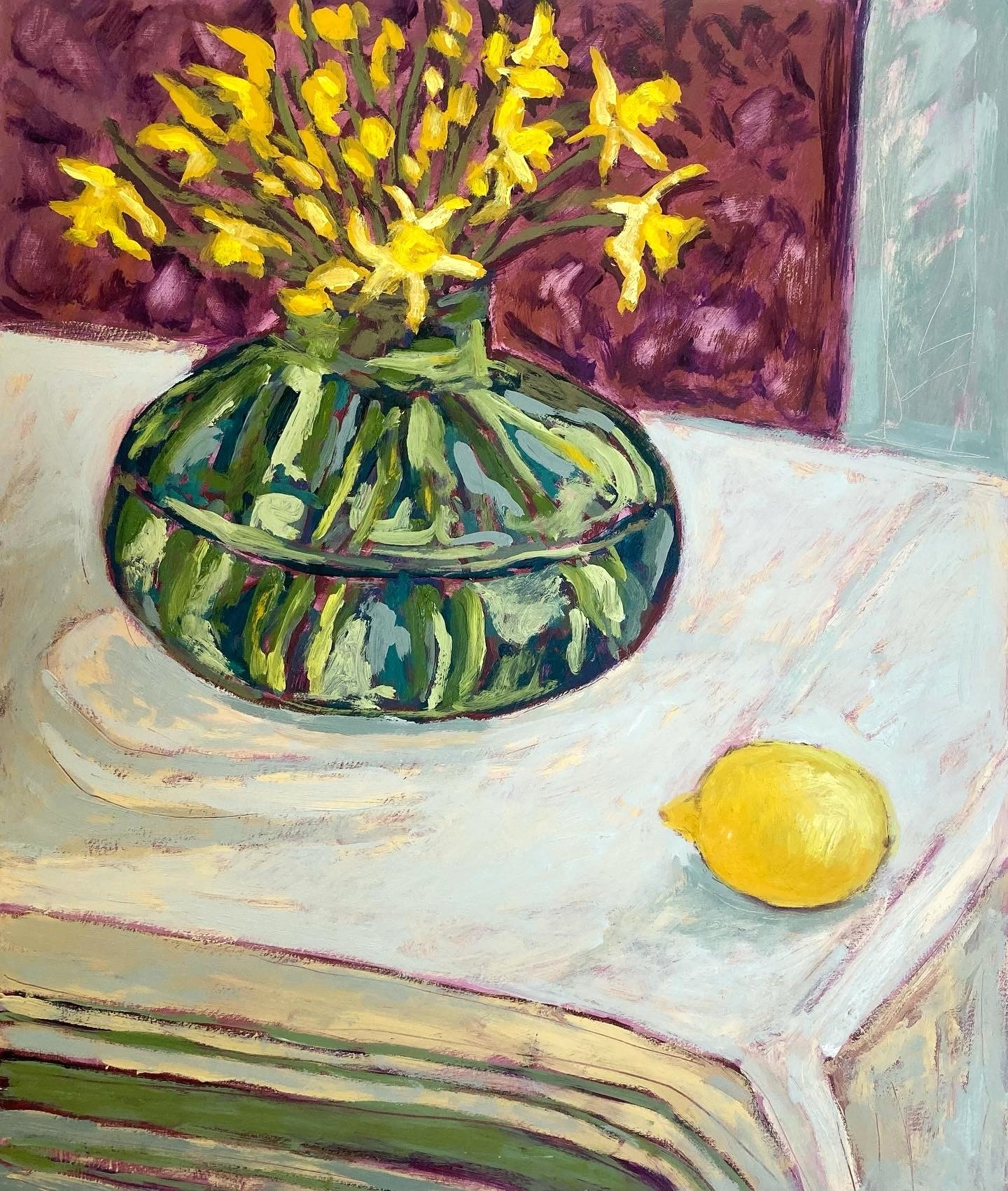Painting Light
Painting light has been the continual exploration in my art over the years. Light and how to capture it influences all of my paintings decisions such as composition, tone, colour and shadows. I have found that the type of light is key to working out how to manage colour and shadow it could be natural light, early morning light, midday sun, evening light, electric light or multiple light sources.
Setting up a painting for light
When painting still life I try to gather together objects, fabrics and flowers which will create interesting shapes and will react to light in different ways. The distance between the objects and the surface where the shadow is cast will change the sharpness of the shadow so I paly around will this during the set up. Its also interesting to consider the following
The closer the object is to the surface the darker and sharper the shadow will be.
How opaque objects are will affect the tone of the shadows, shadows are not flat colour they vary in tone across the shadow.
Objects will also reflect light so white objects will usually cast a lighter shadow than dark objects.
Looking for shadows
Tuning your eye into where the shadows are is really important when painting light. As part of my mindfulness practice I spent time looking at each object while I’m setting up a still life and making different arrangements that create shadows.
I take photographs and then review the different set ups looking for light, dark and dramatic shadow shapes. If your working inside and can control the light source then this is a tool which can be used to create composition through contrasts.
Look for interesting shapes and patterns and how the shadows change over different surfaces.
Look at the negative shapes that are created by the shadows.
Remember that everything has a shadow.
Types of light
Natural light
When painting in the studio with natural light this can change quite dramatically depending on the weather and the time of day. Strong morning and midday light can cast shadows which have a sharp edge especially when setting up a still life on a window sill. Late afternoon and evening light is often softer but not always. On an overcast or cloudy day shadows are diffused and blurry
Electric light
Electric light can create many different effects depending on the relative warmth or coolness of the light used, a warm electric light creates a real glow over the still life and will make the shadows appear cool. During the winter months I often explore this type of light source taking inspiration from Bonnard.
The colour of shadows
If you are looking for a realistic effect the colour of the shadow will depend on the surface on which the shadow is on and the reflected light from the object. If the table cloth is yellow then the shadow will be a darker yellow this could be a warm dark or a cool dark depending on the type of light source whether this is natural or electric. The shadow will be darker closer to the object.
Warm light = cool shadow
Cool light= warm shadow
Although this is true and to create a more realistic painting the difference between the warm and cool is very subtle.
I am not trying to paint in a completely realistic manner and as a colourist I love to play with colour. Colour is my tool to create mood, drama and interest and so this is the part of painting light that I love to explore. I like to break the rules and create visual effects by changing the colours making them more intense or unusual.
High light
Highlights are the icing on the cake and I try to use these sparingly. Highlights are where the light hits the object intensely, the eye is drawn to the highlight as it often where there is the highest contrast. I love to tint these lighter colours and only use white a touch.
Check list for painting light
Select a subject which will create different light effects
Look
Select a light source
Practice, take photographs and make sketches
Look for interesting shadow shapes
Shadows have varied tones within them
Look for the warm and cool colours
Shadows are darker closer to the object
Everything has a shadow
Break the rules
Useful terminology
Highlight: where light is directly bouncing off an object, usually the lightest point.
Mid tone: the transition on an object from dark to light.
Shadow: area of object which is in shade
Cast shadow: the shadow left by an object
Reflected light: light bouncing back onto the shadow from the surroundings
Core Shadow: area in the shadow which is not being hit by reflected light
Useful resources
I love this series of videos by Alice Mumford, she has an amazing way of painting light!
https://www.youtube.com/watch?v=c6AFhyeGFA0





